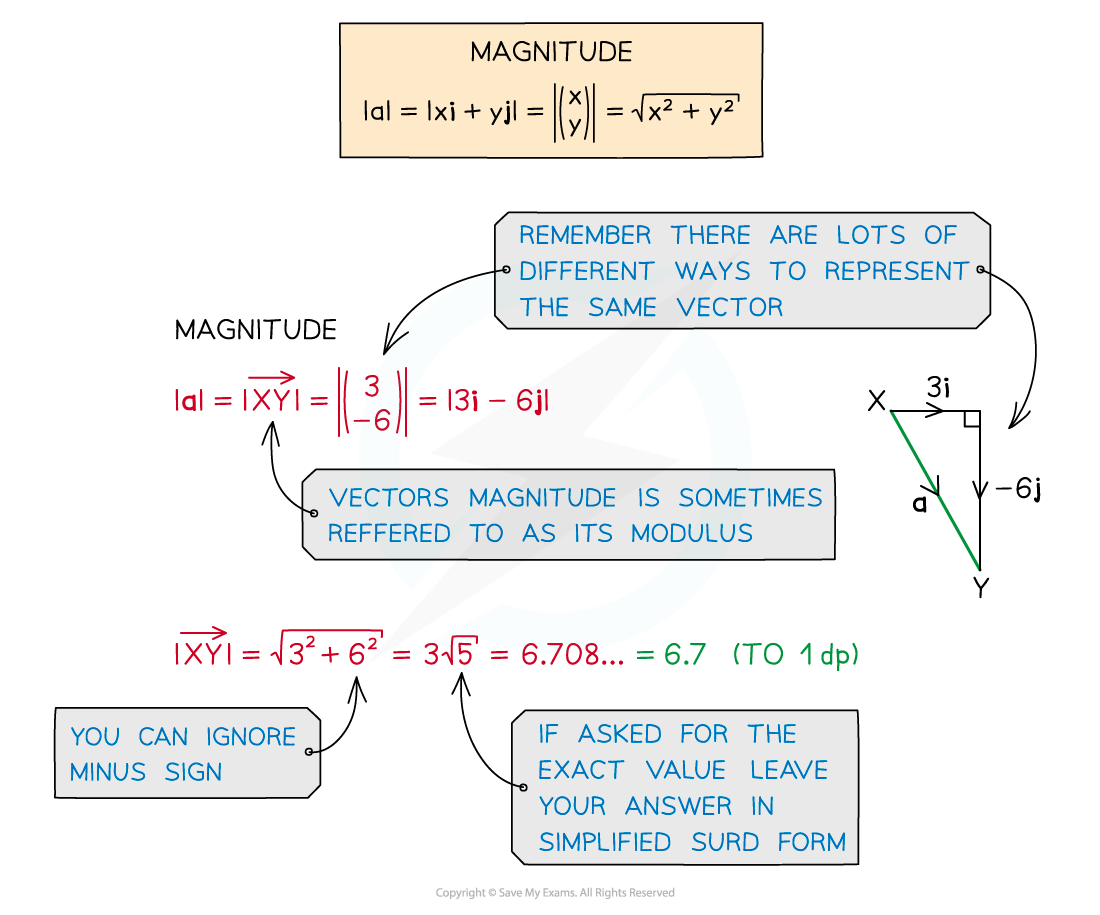Magnitude & Direction (OCR A Level Maths A) : Revision Note
Did this video help you?
Magnitude & Direction
What is the magnitude of a vector?
The magnitude of a vector is simply its size
It also tells us the distance between two points
You can find the magnitude of a vector using Pythagoras’ theorem
The magnitude of a vector
is written
when typed (or
when handwritten)

To work out the unit vector in the direction of a given vector
A unit vector has a magnitude of 1
So to find the unit vector of a given vector, divide by its magnitude

What is the direction of a vector?
Vectors have opposite direction if they are the same size but opposite signs
e.g. if
or
then
or
The direction of a vector is what makes it more than just a scalar
Eg. two objects with velocities of 7 m/s and ‑7 m/s are travelling at the same speed but in opposite directions
Two vectors are parallel if and only if one is a scalar multiple of the other
For real-life contexts such as mechanics, direction can be calculated from a given vector using trigonometry (see Right-Angled Triangles)
It is usually calculated anticlockwise from the positive x-axis (unless otherwise stated eg. a bearing)
How do I write a vector in component form?
We have already seen that vectors can be written in different forms
Component form means writing a vector in terms of i and j components
Given the magnitude and direction of a vector you can work out its components and vice versa


Examiner Tips and Tricks
Diagrams can help, especially when working out direction – if there isn’t a diagram, draw one.
Remember, resolving a vector just means writing it in component form.
Worked Example

 Unlock more revision notes. It's free!
Unlock more revision notes. It's free!
By signing up you agree to our Terms and Privacy Policy.
Already have an account? Log in
Did this page help you?
